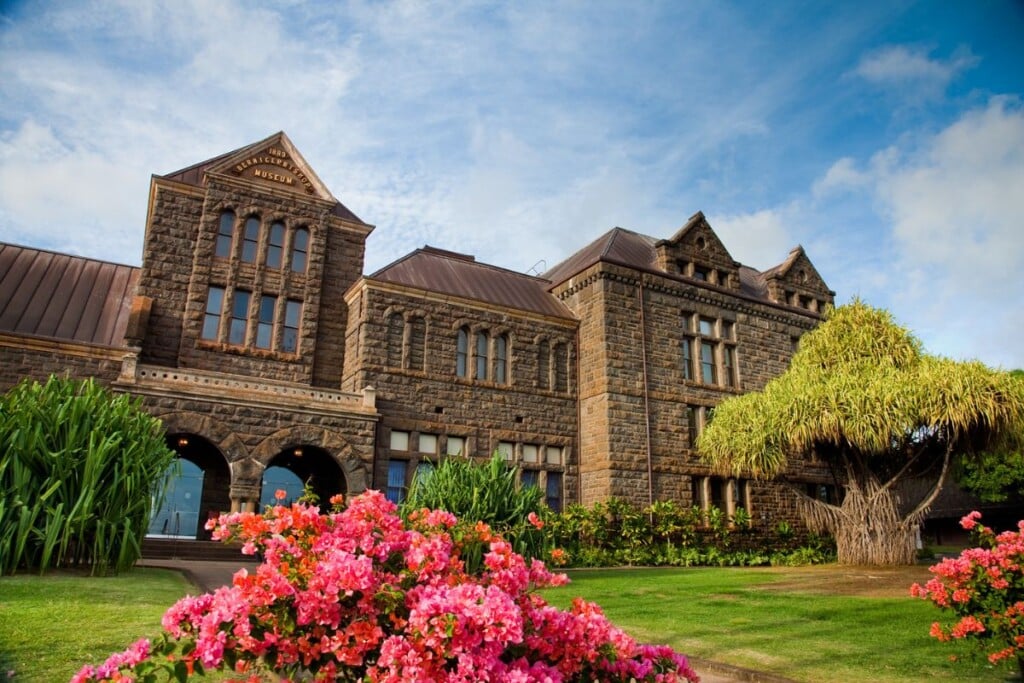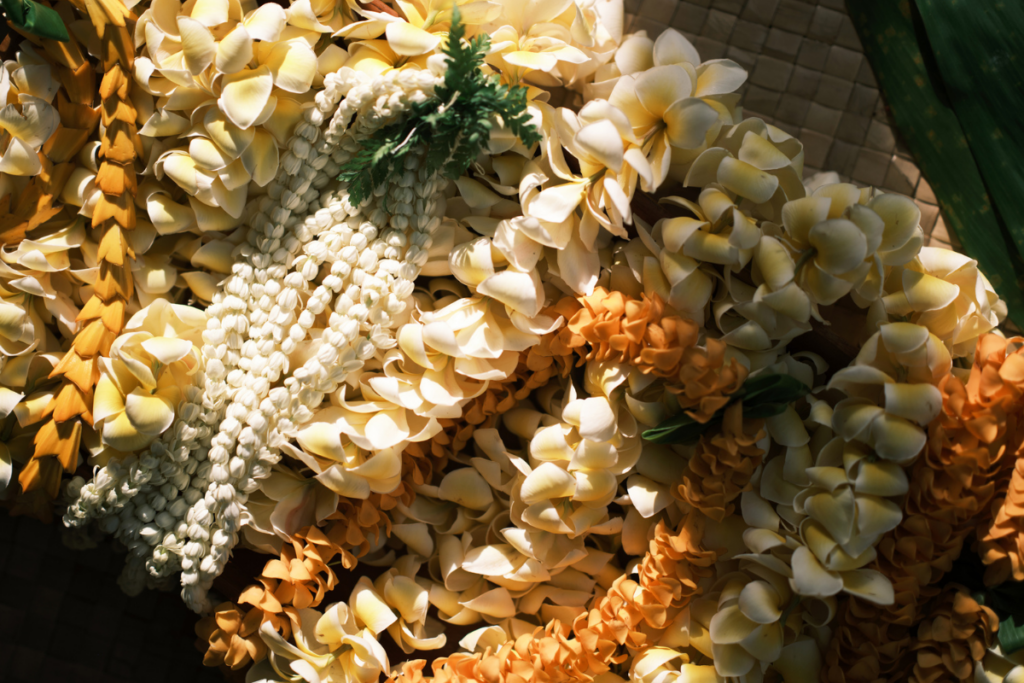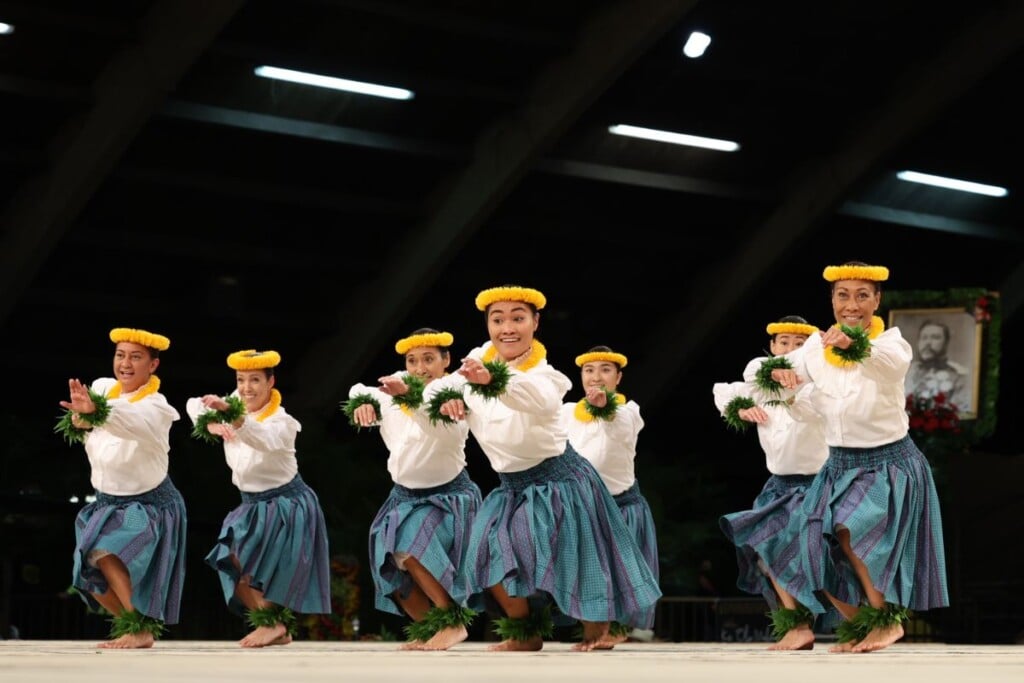10 Hawaiʻi Museums to Visit on Your Next Trip to the Islands
From unearthing the stories behind Polynesian artifacts to spotlighting the Islands’ contemporary art scene, these museums are a portal to a colorful history and culture.

The Islands are home to a diverse collection of museums, vibrant galleries and important memorials where locals and travelers alike can see artifacts from early Polynesian settlers and works by local and international artists. And you don’t need to be a history buff or art aficionado to appreciate Hawaiʻi’s culture—both past and present. These 10 Hawaiʻi museums are worth adding to your travel itinerary.
Oʻahu
1. Bernice Pauahi Bishop Museum
Bishop Museum is the largest museum in the state. Located in Honolulu, it was originally designed to house the impressive collection of Hawaiian artifacts and royal heirlooms of Princess Bernice Pauahi Bishop, a descendant of King Kamehameha I. Today, the museum has one of the largest natural specimen collections in the world and is recognized as a premier institution covering the natural and cultural history of the Pacific. Here, visitors can uncover the lives of ancient Hawaiians, immigrants to Hawaiʻi and other Pacific Islanders. Every month, the museum holds an after-hours event for kamaʻāina and visitors to explore the historic Hawaiian Hall, hear about new scientific discoveries and engage with Hawaiian cultural practitioners. Food and drinks are available for purchase to enjoy under the stars on the museum’s Great Lawn. Tickets are $5 in advance or $10 at the door.
1525 Bernice St., Honolulu, bishopmuseum.org.
2. Honolulu Museum of Art

Honolulu Museum of Art’s permanent collection boasts more than 50,000 pieces spanning 5,000 years, from Asian textiles and European paintings to traditional works from Africa and Oceania.
Photo: Hawaiʻi Tourism Authority (HTA) / Daeja Fallas
For art lovers, the Honolulu Museum of Art is a must-see. The museum’s permanent collection boasts more than 50,000 pieces spanning 5,000 years, from Asian textiles and European paintings to traditional works from Africa and Oceania. HoMA also houses rotating exhibits, which currently includes “Awakening” by international artist Rebecca Louise Law; her yearlong display will remain up until September 2023. For her work, Law transformed two museum galleries into an immersive floral experience by stringing endemic flora and other flowers from the ceiling. The exhibit celebrates the role of pua (flowers) in Hawaiian culture while also inviting viewers to reflect on the beauty and fragility of nature in the current world. If you’re looking for an evening activity, HoMA is open until 9 every Friday and Saturday.
9000 S. Beretania St., Honolulu, honolulumuseum.org.
3. Shangri La

Shangri La is a center for Islamic art and culture.
Photo: Tracy Chan
HoMA also offers tours of Shangri La, the former home of billionaire heiress and philanthropist Doris Duke. Overseen by the Doris Duke Charitable Foundation, the property is a center for Islamic art and culture. Often called “the richest little girl in the world,” the late Duke pursued an array of hobbies and even learned to surf from Duke Kahanamoku, and her extensive world travels resulted in a priceless art collection. Her former home on the slopes of Lēʻahi is adorned with beautiful treasures from North Africa, the Middle East and South Asia. Take a tour and admire the exquisite chandeliers, custom-made tile work in the central courthouse and the views from Diamond Head. Tours are only available through HoMA and are a must for architecture and interior design enthusiasts.
For more information, visit shangrilahawaii.org.
4. ʻIolani Palace

Visitors to ʻIolani Palace can check out the palace’s royal portraits, ornate furnishings and priceless regalia.
Photo: Getty Images
Located in Downtown Honolulu, ʻIolani Palace is an enduring and unique symbol of the Hawaiian monarchy and is the only royal palace on U.S. soil. Construction of the palace began under King Kalākaua on Dec. 31, 1879, and was completed in 1882. Inspiration for the exterior of the palace was taken from buildings from the Italian Renaissance, but elements of classic Hawaiian architecture are evident as well. The result is a one-of-a-kind aesthetic described as “American Florentine.” Visitors can check out the palace’s royal portraits, ornate furnishings and priceless regalia during tours, and learn about the early use of advanced technology in the place—it had electric lights even before the White House, and flush toilets too, a rare luxury at the time.
364 S. King St., Honolulu, iolanipalace.org.
5. Pearl Harbor National Memorial

Pearl Harbor is the only U.S. naval base to be designated a National Historical Landmark and is home to the USS Arizona Memorial.
Photo: Getty Images
The attack on Pearl Harbor on Dec. 7, 1941, plunged the U.S. into World War II. Now, more than 80 years later, the site is a place of remembrance and education. Pearl Harbor is the only U.S. naval base to be designated a National Historical Landmark and is home to the USS Arizona Memorial, the Battleship Missouri Memorial, the USS Bowfin Submarine Museum & Park and the Pacific Aviation Museum. For World War II history buffs, aviation enthusiasts and people looking to pay tribute to the lives lost that day, a visit to Pearl Harbor is a must.
Admission to the Pearl Harbor Visitor Center is free. General admission to the USS Arizona Memorial is also free, however, online reservations are strongly encouraged. For more information, visit nps.gov/perl/index.htm.
Maui
6. Hale Hōʻikeʻike at the Bailey House

The museum’s exhibits of traditional Hawaiian tools and other antiquities help tell the story of ancient Hawaiʻi’s highly sophisticated society.
Photo: Kevin Allen
Nestled in Wailuku Town, Hale Hōʻikeʻike at the Bailey House was built in 1832 and holds a 2,000-piece Hawaiian artifact collection, the largest in Maui County. Throughout the museum are exhibits of traditional Hawaiian tools and other antiquities that help tell the story of ancient Hawaiʻi’s highly sophisticated society. Here, visitors can also browse the museum’s archives that include maps, genealogies and biographies.
2375A Main St., Wailuku, mauimuseum.org.
7. Maui Ocean Center

Visitors to the ocean center dive into immersive experiences and exhibits about Hawaiʻi’s coral reefs and vibrant underwater world.
Photo: Aaron K. Yoshino
Touring the Maui Ocean Center is a hit for all ages. Visitors to the ocean center dive into immersive experiences and exhibits about Hawaiʻi’s coral reefs and vibrant underwater world. The ocean center is part of Coral World, an international collection of eco-conscious aquariums, and is home to octopi, seahorses, jellyfish, honu (turtle) and manō (sharks). And throughout the aquarium are comprehensive displays about various facets of Hawaiian culture, including a fascinating exhibit on Kahoʻolawe. The exhibit is dedicated to increasing awareness about the significance of the island as a sacred place for Native Hawaiians, as well as its troubled history as a bombing target for U.S. military drills in the 1990s. The exhibit also recognizes members of the influential Native Hawaiian movement who helped reclaim and restore the island. It’s the ocean center’s goal to preserve Hawaiʻi’s marine ecosystems and with it, the Islands’ culture.
192 Maʻalaea Road, Maʻalaea, mauioceancenter.com.
Kauaʻi
8. Kauaʻi Museum

Kauaʻi Museum displays portraits of the Hawaiian monarchy and collections of works by artisans from Kauaʻi and Niʻihau.
Photo: Mallory Roe
Just a short drive from Līhuʻe Airport, the Kauaʻi Museum displays portraits of the Hawaiian monarchy and collections of works by artisans from Kauaʻi and Niʻihau. The museum is also filled with ancient artifacts that reveal what early Native Hawaiian life was like.
4428 Rice St., Līhuʻe, kauaimuseum.org.
Hawaiʻi Island
9. ʻImiloa Astronomy Center

ʻImiloa Astronomy Center is a wonderful place to discover more about the history of Polynesian navigation and early Hawaiians’ deep knowledge of the night sky.
Photo: Hawaiʻi Tourism Authority (HTA) / Tor Johnson
Located in the foothills of Mauna Kea, the ʻImiloa Astronomy Center connects the historical and spiritual significance of the mountain with Hawaiʻi’s legacy of exploration utilizing the stars. Inside, visitors to the center will find hands-on exhibits that are great for kids as well as educational programs that run throughout the day. The planetarium presentations cover engaging topics, including the significance of Makaliʻi, the distinct cluster of stars known in Greek as the Pleiades and Subaru in Japanese. Along with learning how to identify constellations and planets, the ʻImiloa Astronomy Center is a wonderful place to discover more about the history of Polynesian navigation and early Hawaiians’ deep knowledge of the night sky.
600 ‘Imiloa Place, Hilo, imiloahawaii.org.
10. Lyman Museum and Mission House

At the Lyman Museum, visitors will find a plethora of information about Hawaiʻi.
Photo: Hawaiʻi Tourism Authority (HTA) / Tor Johnson
The Lyman Museum in Hilo is filled with stories of the past and superb collections of artifacts, fine art and natural history exhibits. Here, visitors will find a plethora of information about Hawaiʻi, from its volcanic birth and the rare species found here, to its various ethnic groups and how they’ve shaped local culture today. Next door to the museum is the Lyman Mission House. Built in the 1830s for missionaries David and Sarah Lyman, the house is the oldest standing wood structure on the Big Island and one of the oldest in the state. Inside, visitors catch a glimpse of what life was like almost 200 years ago.
276 Haili St., lymanmuseum.org.


